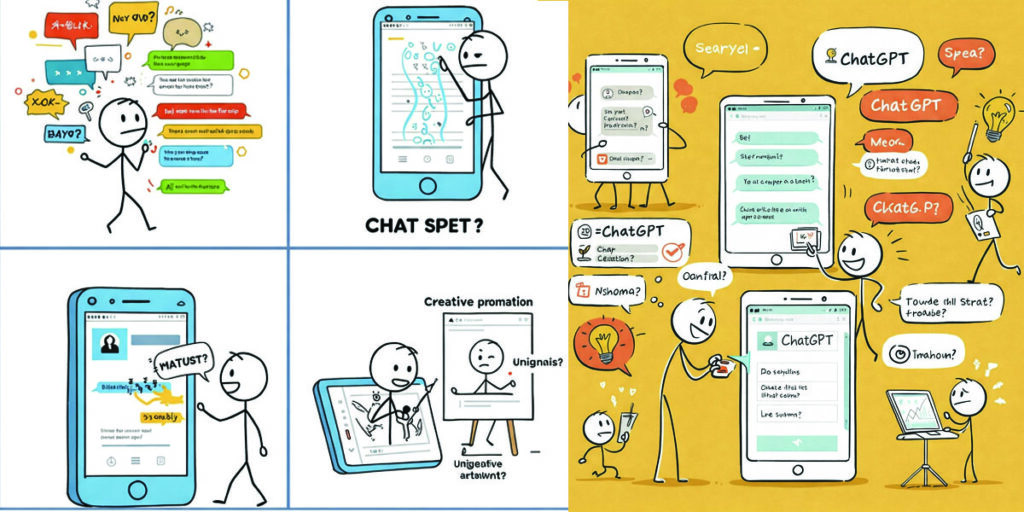AI writing assistant specialized in marketing content, emails, and product descriptions.
The digital landscape is in constant flux, driven by technological advancements that reshape how businesses communicate and operate. Among these transformative forces, artificial intelligence (AI) has emerged as a powerful tool, permeating various aspects of the modern economy. Within the realm of content creation and marketing, AI writing assistants have carved a significant niche, offering speed, scalability, and a novel approach to crafting compelling narratives. Copy.ai stands out as a prominent player in this evolving market, specializing in generating marketing copy, emails, and product descriptions. To truly understand its impact and trajectory, it’s crucial to delve into its history, analyze the economic market it operates within, and examine its networking effects on individuals and businesses.
A Genesis Born from the Need for Scalable Content (History of Copy.ai)
The genesis of Copy.ai can be traced back to the burgeoning demand for high-quality, engaging content in the digital age. As businesses increasingly relied on online platforms for marketing, sales, and customer engagement, the need for consistent and effective copywriting escalated dramatically. Traditional methods of content creation, relying solely on human writers, often faced limitations in terms of speed, cost, and the sheer volume required to populate websites, social media channels, email campaigns, and e-commerce listings.
Recognizing this growing gap between demand and supply, a wave of AI-powered writing tools began to emerge in the late 2010s and early 2020s. Copy.ai was founded in this dynamic environment, aiming to democratize access to professional-grade copywriting by leveraging the power of advanced natural language processing (NLP) and machine learning (ML) models. While the exact founding date and initial team composition might not be widely publicized, its emergence aligns with a period of significant breakthroughs in AI, particularly with the development of large language models capable of understanding and generating human-like text.
Early iterations of AI writing tools often focused on basic text generation, but Copy.ai quickly distinguished itself by specializing in marketing-focused content. This strategic focus allowed the platform to train its models on vast datasets of successful marketing copy, enabling it to understand the nuances of persuasive language, brand voice, and target audience engagement. Unlike more general-purpose language models, Copy.ai was designed from the ground up to assist marketers and business owners in crafting compelling headlines, engaging social media posts, persuasive sales emails, and informative product descriptions.
The initial reception of Copy.ai was likely met with a mix of curiosity and skepticism. While the potential for AI to automate and accelerate content creation was evident, concerns about the quality, originality, and ethical implications of AI-generated text were also prevalent. However, as the technology matured and Copy.ai continued to refine its algorithms and user interface, it gained traction among early adopters who recognized its potential to streamline their content workflows and improve their marketing outcomes.
Over time, Copy.ai has evolved significantly, expanding its range of content generation tools and incorporating user feedback to enhance its capabilities. It has likely integrated with other marketing platforms and introduced features that allow users to refine the AI-generated text, ensuring it aligns with their specific brand guidelines and marketing objectives. The company has likely navigated the challenges of maintaining data privacy, ensuring the originality of its output, and adapting to the ever-evolving landscape of AI technology.
The history of Copy.ai is therefore a testament to the growing recognition of AI’s potential to augment human creativity and productivity in the content creation process. By focusing on the specific needs of marketers and businesses, it has positioned itself as a valuable tool in the modern digital marketing arsenal.
Navigating the Expanding Landscape: The Economic Market for AI Writing Assistants
Copy.ai operates within a rapidly expanding economic market for AI writing assistants. This market is driven by several key factors, including the increasing volume of online content, the growing need for personalized and engaging marketing materials, and the desire for businesses to improve efficiency and reduce costs associated with content creation.
The sheer volume of content being generated daily across the internet is staggering. From social media updates and blog posts to website copy and email marketing campaigns, businesses of all sizes are constantly striving to maintain an active online presence. This relentless demand for content has created a significant opportunity for AI writing assistants like Copy.ai to provide a scalable and cost-effective solution.
Furthermore, the increasing sophistication of digital marketing necessitates personalized and highly targeted content. Generic marketing messages are often ineffective in today’s crowded online environment. AI writing assistants can analyze data, understand audience segments, and generate tailored content that resonates with specific customer profiles, potentially leading to higher engagement and conversion rates. Copy.ai’s specialization in marketing content positions it well to capitalize on this demand for personalized messaging.
From an economic perspective, AI writing assistants offer several potential benefits for businesses. They can significantly reduce the time and cost associated with content creation. Instead of relying solely on human writers, who may have limited capacity and higher hourly rates, businesses can leverage AI tools to generate initial drafts or even complete pieces of content much faster and at a lower cost per unit. This efficiency can free up human marketers to focus on higher-level strategic tasks, such as campaign planning and performance analysis.
The market for AI writing assistants is also characterized by increasing competition. Numerous platforms have emerged, offering a range of features and pricing models. These competitors may focus on different niches, such as academic writing, technical documentation, or general-purpose content creation. Copy.ai’s continued success depends on its ability to differentiate itself through its specialization in marketing content, the quality and sophistication of its AI models, its user-friendly interface, and its ability to adapt to the evolving needs of its target market.
The economic impact of AI writing assistants extends beyond individual businesses. The growth of this market is creating new opportunities in areas such as AI development, natural language processing research, and marketing technology integration. It is also raising important questions about the future of work for human writers and the need for individuals to adapt their skills in response to these technological advancements.
The pricing models adopted by AI writing assistants like Copy.ai also play a significant role in the economic dynamics of the market. Subscription-based models, often tiered based on usage and features, are common. These models provide recurring revenue for the AI platform and offer businesses predictable costs for their content creation needs. The perceived value proposition – the balance between the cost of the subscription and the time and resources saved through using the AI – is a key factor in the adoption and growth of these tools.
In conclusion, the economic market for AI writing assistants is vibrant and expanding, driven by the increasing demand for online content, the need for personalization, and the potential for cost savings and efficiency gains. Copy.ai’s strategic focus on marketing content positions it to capture a significant share of this market, but it must continue to innovate and adapt to the competitive landscape to maintain its position.
Connecting and Amplifying: The Networking Effects of Copy.ai
Beyond its direct impact on individual users and businesses, Copy.ai also contributes to broader networking effects within the marketing and business ecosystem. These effects can be observed in several key areas:
1. Empowering Small Businesses and Solopreneurs: Copy.ai lowers the barrier to entry for small businesses and solopreneurs who may lack the resources to hire professional copywriters. By providing an affordable and accessible tool for generating marketing content, it enables these entities to create a stronger online presence, reach a wider audience, and compete more effectively with larger organizations. This democratization of content creation fosters a more level playing field and encourages innovation across various industries.
2. Facilitating Collaboration and Idea Generation: While Copy.ai automates the initial drafting process, it can also serve as a powerful tool for brainstorming and idea generation. Marketers can input keywords, target audience information, and desired tones to receive a variety of content options, which can then be refined and adapted. This iterative process can spark new creative directions and enhance the overall quality of the final output. Teams can collaborate on AI-generated drafts, leveraging the technology as a starting point for their collective creativity.
3. Driving Adoption of AI in Marketing: As a successful and widely used AI writing assistant, Copy.ai contributes to the broader adoption of AI-powered tools within the marketing industry. Its positive user experiences and demonstrable results can encourage other marketers and businesses to explore the potential of AI in various aspects of their operations, from content creation and social media management to customer relationship management and data analysis. This increased adoption can lead to further innovation and the development of even more sophisticated AI-powered marketing solutions.
4. Shaping the Skills of Future Marketers: The emergence of AI writing assistants necessitates a shift in the skills required of human marketers. While the ability to craft compelling copy remains essential, marketers also need to develop skills in effectively prompting and guiding AI tools, editing and refining AI-generated content, and integrating AI into their overall marketing strategies. Copy.ai, as a leading platform, plays a role in shaping these evolving skill sets by providing a practical and accessible way for marketers to interact with AI in their daily workflows.
5. Influencing Content Standards and Expectations: The widespread use of AI writing assistants can also influence the overall standards and expectations for online content. The ability to quickly generate large volumes of text may lead to a greater emphasis on speed and efficiency in content production. However, it also raises questions about the importance of originality, brand voice consistency, and the human touch in marketing communications. Copy.ai, and the broader AI writing assistant market, will likely continue to grapple with these issues as the technology evolves.
6. Integration with Other Marketing Technologies: Copy.ai often integrates with other marketing technologies, such as social media management platforms, email marketing services, and CRM systems. These integrations enhance the overall efficiency of marketing workflows by allowing users to seamlessly generate and deploy AI-powered content across various channels. This interconnectedness strengthens the networking effects of Copy.ai by making it a more valuable and integrated component of the modern marketing technology stack.
In conclusion, the networking effects of Copy.ai extend beyond its direct users, influencing the broader marketing ecosystem by empowering small businesses, facilitating collaboration, driving AI adoption, shaping marketer skills, influencing content standards, and integrating with other technologies. As AI writing assistants become increasingly prevalent, their role in connecting and amplifying marketing efforts will continue to grow.
The Future of AI-Powered Copywriting: Challenges and Opportunities
Looking ahead, the field of AI-powered copywriting, and the trajectory of companies like Copy.ai, presents both significant opportunities and potential challenges.
Opportunities:
- Enhanced Personalization: Future iterations of AI writing assistants will likely leverage more sophisticated data analysis and machine learning techniques to generate even more personalized and targeted content, leading to improved marketing effectiveness.
- Multimodal Content Generation: The ability to generate not just text but also images, videos, and other forms of content based on user prompts could revolutionize content creation workflows.
- Seamless Integration: Deeper integration with other business and marketing platforms will streamline workflows and make AI writing assistants an indispensable part of the marketing technology stack.
- Niche Specialization: We may see the emergence of more specialized AI writing assistants tailored to specific industries or content formats, offering even greater precision and expertise.
- Democratization of Creativity: AI tools could empower individuals with limited writing skills to express their ideas and create compelling content, fostering greater participation in the digital economy.
Challenges:
- Maintaining Originality and Avoiding Plagiarism: Ensuring that AI-generated content is original and does not infringe on copyright remains a critical challenge. Robust plagiarism detection and prevention mechanisms are essential.
- Preserving Brand Voice and Authenticity: While AI can learn to mimic a brand’s style, maintaining genuine brand voice and authenticity requires careful human oversight and refinement.
- Ethical Considerations: Issues related to transparency, disclosure of AI-generated content, and the potential for misuse need to be addressed through industry standards and ethical guidelines.
- The Evolving Role of Human Writers: The rise of AI writing assistants necessitates a re-evaluation of the role of human copywriters. Focusing on strategic thinking, creative direction, and tasks that require uniquely human skills will be crucial.
- Over-Reliance and Deskilling: There is a risk that over-reliance on AI tools could lead to a deskilling of human writers and a decline in the ability to craft compelling narratives independently.
Copy.ai’s journey from its inception to its current position as a leading AI writing assistant reflects the transformative power of artificial intelligence in the realm of content creation and marketing. Its history is intertwined with the growing demand for scalable and effective online communication. The economic market it operates within is dynamic and expanding, driven by the need for efficiency and personalization. Furthermore, its networking effects ripple across the business ecosystem, empowering small businesses, fostering collaboration, and shaping the skills of future marketers.
While the future of AI-powered copywriting holds immense promise, it also presents significant challenges that need to be addressed thoughtfully. Companies like Copy.ai will play a crucial role in navigating this evolving landscape, continuing to innovate while addressing ethical considerations and fostering a collaborative relationship between humans and AI in the creation of compelling and impactful content. As the technology matures, AI writing assistants are poised to become an even more integral part of the marketing toolkit, augmenting human creativity and driving new levels of efficiency and personalization in the digital age.




















